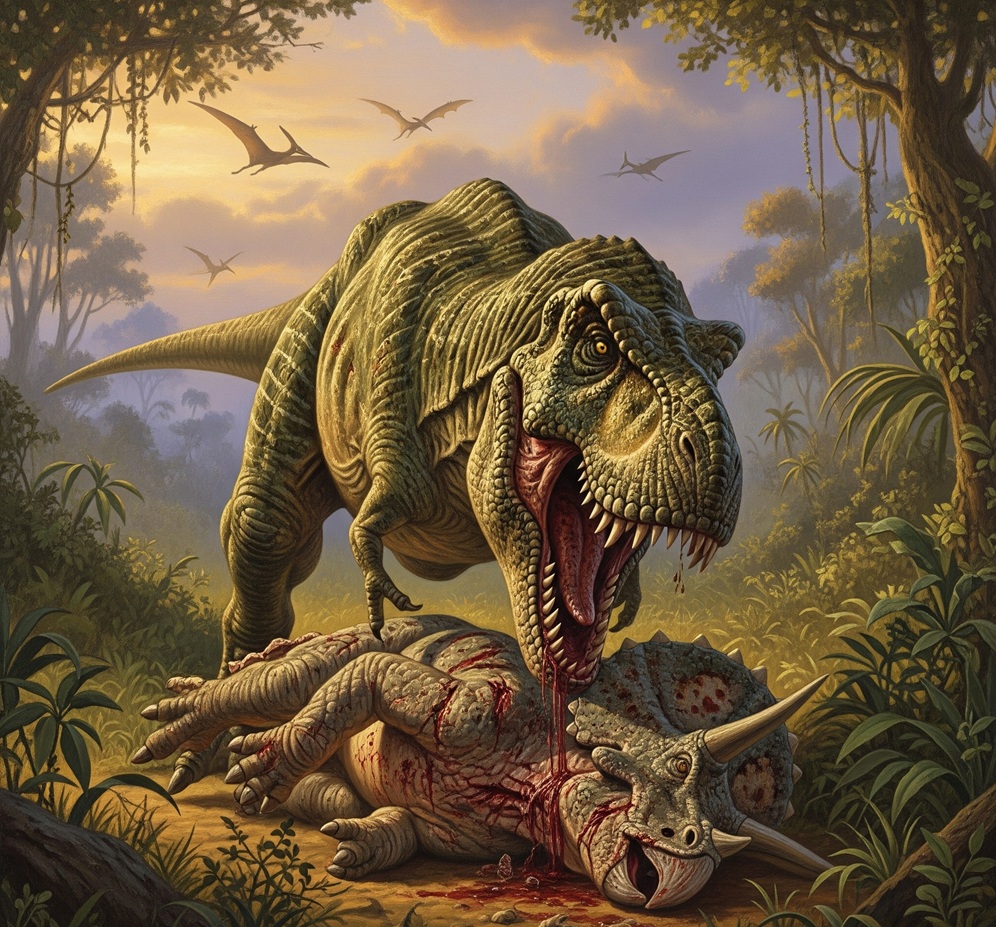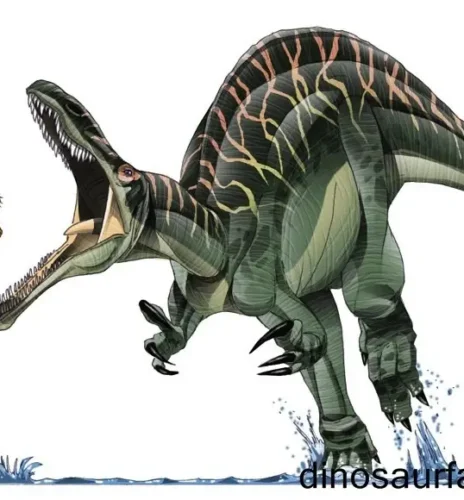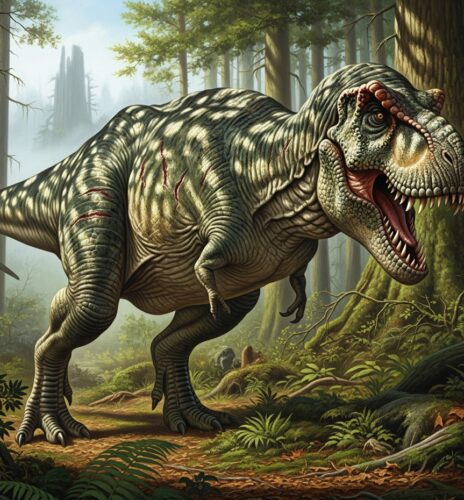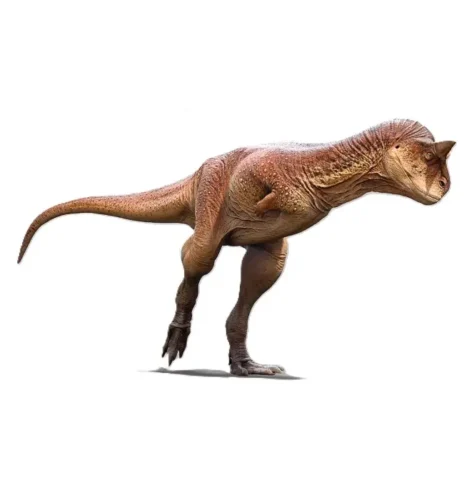The name Tyrannosaurus rex evokes an image of an unstoppable, bone-crushing predator, and for good reason. As the “tyrant lizard king,” this dinosaur has captivated our imaginations for over a century. But beneath the fearsome reputation lies a creature far more complex and surprising than the movies often portray.
While we all know T. rex was big and had tiny arms, decades of dedicated research and new discoveries are continually rewriting its story. From its powerful senses to its surprising social life, here are five of the most interesting facts about this iconic dinosaur, along with some of the latest scientific findings.
1. The Strongest Bite of Any Land Animal: With a skull over four feet long and teeth the size of bananas, it’s no surprise that T. rex had a powerful bite. But how powerful? Scientific research has estimated its bite force to be between 8,000 and 12,800 pounds per square inch, a force strong enough to splinter and crush bone. This incredible power, combined with its serrated teeth, allowed T. rex to chomp through the thick bones of its prey, a trait known as “extreme osteophagy.”
2. A Slow but Deadly Walker: Contrary to its movie depictions of chasing down jeeps at high speed, research suggests that the T. rex was not a fast runner. Biomechanical analyses indicate that its massive weight would have put immense stress on its bones, making a full-speed sprint dangerous and likely impossible. Instead, T. rex was probably a highly efficient walker, capable of maintaining a walking pace of around 12 miles per hour. Its long strides and specialized foot bones would have allowed it to cover vast distances, essentially wearing down its prey over time.
3. Not the Biggest Meat-Eater (But Close!): Many people assume T. rex was the largest carnivorous dinosaur to ever exist, but it was equaled or even outclassed by a few rivals. Both Spinosaurus and Giganotosaurus from different continents and time periods are believed to have been larger in both length and weight. While T. rex might not hold the top spot for size, its immense bite force and heavily-muscled build cement its place as one of the most brutally optimized predators the world has ever seen.
4. A Keen Sense of Smell and Sight: T. rex was a sensory powerhouse. Its brain had a proportionally larger olfactory bulb than many other dinosaurs, suggesting a sense of smell superior to a modern bloodhound. This would have allowed it to track down prey or locate carcasses from miles away. Furthermore, its forward-facing eyes, the size of grapefruits, provided excellent binocular vision, giving it a depth perception that was crucial for hunting and a field of vision comparable to or even superior to modern hawks and eagles.
5. A Complicated Social Life: While often portrayed as a solitary hunter, evidence suggests T. rex may have lived and hunted in groups. Fossil discoveries of multiple T. rex specimens found together in the same bone bed hint at the possibility of pack behavior or familial groups. Additionally, fossilized bite marks on other T. rex bones suggest that they engaged in intra-species combat, possibly over territory or mates, or even cannibalism. These complex interactions paint a picture of a social structure far more intricate than previously thought.
Recent Discoveries and Findings
The world of paleontology is constantly evolving, and the last few years have brought exciting new insights into Tyrannosaurus rex:
- A Close Relative Rewrites the Family Tree: A recent study published in Nature identified a new species of tyrannosaurid, Khankhuuluu mongoliensis, which is being hailed as a “missing link” between smaller tyrannosaurs and the massive T. rex. This discovery in Mongolia is helping paleontologists rewrite the evolutionary history of the entire family.
- The T. rex Endangered Species Debate: A thought-provoking 2025 paper in the journal Palaeontologia Electronica brought to light the significant issue of commercial fossil collecting. The study argues that a majority of the known T. rex fossils are in private hands, which hinders scientific research and makes them inaccessible for public study. This raises important questions about the future of paleontological research and the preservation of our shared natural heritage.
- Preserved Blood Vessels and Healing: A groundbreaking discovery was made in a rib bone from “Scotty,” the largest T. rex specimen ever found. Researchers identified preserved blood vessel structures inside the bone, which were linked to a healed fracture. Using advanced X-ray imaging, scientists can now study how dinosaurs healed from injuries and gain new insights into their physiology.
The more we learn about Tyrannosaurus rex, the more we realize that it was a truly extraordinary animal. With a combination of immense power, heightened senses, and a complex social life, it was a predator perfectly adapted to its time and environment, a true king of the dinosaurs.
Resources:
- Carr, T. D. (2025). Tyrannosaurus rex: An endangered species. Palaeontologia Electronica, 28(1): a16. https://palaeo-electronica.org/content/2025/5499-t-rex-endangered-species
- Ibrahim, N. et al. (2014). Semiaquatic adaptations in a giant predatory dinosaur. Science, 345(6204), 1613-1616. (Provides context for Spinosaurus size.)
- Sellers, W. I. et al. (2017). Investigating the running abilities of Tyrannosaurus rex using stress-constrained multibody dynamic analysis. PeerJ, 5:e3725. https://www.ncbi.nlm.nih.gov/pmc/articles/PMC5518979/
- Vice (2025). Scientists Discover New Dinosaur Species Related to T. Rex. https://www.vice.com/en/article/scientists-discover-new-dinosaur-species-related-to-t-rex/
- Smithsonian Magazine (2025). Preserved Blood Vessels Discovered in a Rib Bone From the World’s Largest T. Rex Could Shed Light on How Dinosaurs Healed. https://www.smithsonianmag.com/smart-news/preserved-blood-vessels-discovered-in-a-rib-bone-from-the-worlds-largest-t-rex-could-shed-light-on-how-dinosaurs-healed-180986987/



